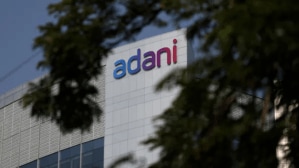There’s no gilt in wealth creation
Since equities hugely outperform government bonds — gilts — as investment options, the Left’s pension reform plan kills the best choices

At a board meeting in Mumbai last week, the discussion went beyond taking organisational decisions into the future of economic reforms. On top of the agenda was pension reforms. In any such discussion, faces usually light up, ideas begin to stream. But this time, in a matter of a few minutes, the faces were crestfallen, the ideas were conspicuous by their absence. I have yet to see a group of men, managing hundreds of thousands of crores, so pessimistic on the future.
With nobody else left to strike at, they blamed the reforms troika of Manmohan Singh, P. Chidambaram and Montek Singh Ahluwalia for backtracking on reforms. They said that despite having icons of liberalisation at the helm of affairs, reforms in the UPA administration have reversed; what the NDA had begun, the UPA has ended. Their conclusion: having reformists is no guarantee to having reforms delivered.
On Wednesday the Left, in a fit of rare magnanimity and partial logic of the political economy kind, agreed to soften its opposition to the Pension Fund Regulatory and Development Authority Bill, with two conditions:
• The money will be managed by government institutions like LIC and, GIC
• The money will be invested only in government securities (G-Secs).
To my mind the scheme is a non starter and we may as well drop this half-step, this pretence. Unlike in the case of disinvestment of PSUs or increasing the percentage of FDI from 26 per cent to 49 per cent (a rise that makes no difference to the operation of the company), we can’t have a half step in pension reforms.
I spoke to the head of a large public sector financial institution. He said that while restricting investment in G-Secs is a bad idea, allowing PSUs to manage money is good. And not merely because he would get to manage the huge sums but because, within a year or two, private sector pension fund managers would be in the market. But allowing only PSU fund managers would be discriminatory and the Bill could be challenged.
If the bill is passed, it will not only mark the beginning of a fully-funded pension for government servants but also embrace those who don’t have access to long-term retirement planning instruments. In the new scheme, returns will not be guaranteed (defined benefits) but will depend upon how much a person invests (defined contribution). This money will then be invested in varying percentages, from 100 per cent debt to 90 per cent equity.
By saying that all this money should be invested only in G-Secs, Mr Prakash Karat is taking away the average Indian’s choice of creating long-term wealth. Over the past one, three or five years, the returns from the market have outperformed those from gilts by 23 to 33 percentage points. But this is too short a timeframe to measure the performance of asset classes for a long-term product like pensions and not repeatable going forward.
One answer lies in calculating what is known as the equity premium, the excess return that you can expect from equities above a risk-free return; in India’s case, the returns that Sensex or Nifty can give over the safest 364-day government bond. This premium, according to J R Varma of IIM-A, ranges between 8.75 and 12.5 percentage points (PP). Economist Ajay Shah has estimated it at 8 PP. Aswath Damodaran of Stern School of Business, New York University has calculated it at 5.2 PP, while Rajnish Mehra of University of California, Santa Barbara sees it at 11 PP.
The list is still not complete, but the argument is. Whatever else Mr Karat’s policies do, they will not be able to match the returns that equities give. A citizen investing Rs 10,000 per month in a 6.2 per cent G-Sec will retire, after 30 years, with Rs 1 crore. The same person has the potential to retire with almost triple the wealth (Rs 3 crore) if we take Damodaran’s equity premium, while Mehra’s premium will take care of this saver’s next generation with a kitty of almost Rs 11.6 crore.
I suppose the technical and economic debate is over. Yes, there will be short-term risk. But pension funds are long-term instruments that can smoothen outvolatility. The bigger issue is choice: do I as a free citizen in a free country have the right to invest my money in a low-cost, higher-return product?
Besides, who will invest in G-Secs when alternate avenues like PF and small savings give 8-9.5 per cent? This ‘reform’ in its present form of equity-free investments will die a financial death before it comes to life. Quite like Mr Karat’s 100 per cent debt wish, pension reforms too have to be 100 per cent reforms.





- 01
- 02
- 03
- 04
- 05


























